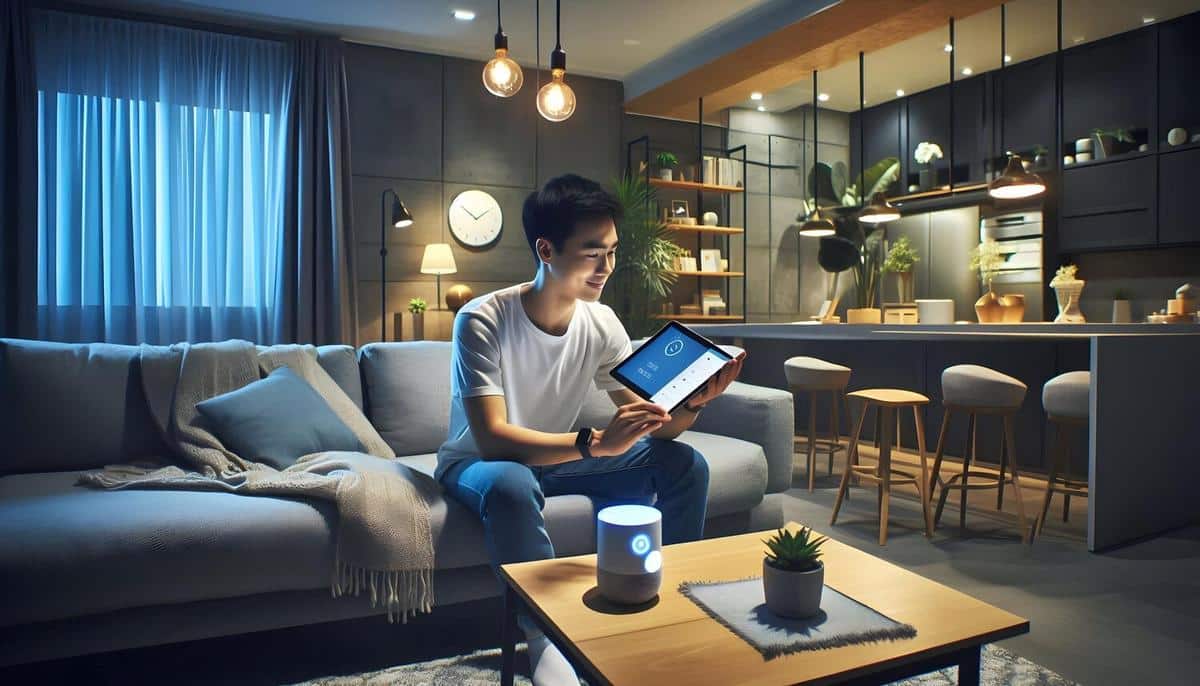
Understanding IoT in Smart Homes: A Comprehensive Guide
Imagine a home where your coffee brews itself when you wake up, your lights adjust to your mood, and your security system keeps you informed of every detail. This isn’t a sci-fi dream—it’s the reality of smart homes powered by the Internet of Things (IoT).
As technology evolves, IoT is becoming a cornerstone of smart home innovations. By connecting everyday devices to the internet, IoT allows for seamless communication between gadgets, making our lives more convenient and efficient. In this guide, we’ll explore how IoT is transforming smart homes and what this means for you.
What is IoT in Smart Homes?
IoT, or the Internet of Things, refers to a network of physical devices that communicate and exchange data via the internet. These devices range from thermostats and lights to refrigerators and security cameras. By integrating IoT into your home, you can control and monitor various systems remotely, enhancing your home’s functionality and your quality of life.
The Impact of IoT on Smart Homes
According to a report from Statista, the worldwide smart home market is expected to grow to over $53 billion by 2022. This growth is driven by the increasing adoption of IoT devices that offer energy efficiency, enhanced security, and improved comfort.
“IoT is revolutionizing the way we interact with our homes,” says James Smith, a technology expert from Tech Innovations. “It’s about creating a responsive and adaptive living environment that anticipates our needs.”
Examples of IoT in Action
Consider the experience of Mark, a homeowner in California. Mark uses a smart thermostat that learns his schedule and adjusts the temperature accordingly, saving him 10% on his energy bills annually. His smart fridge alerts him when he’s running low on groceries, and his voice-controlled assistant manages his daily tasks, from playing music to setting reminders.
How to Get Started with IoT in Your Home
- Research and Plan: Identify which areas of your home could benefit from IoT integration. Consider factors like security, energy management, and convenience.
- Choose Compatible Devices: Ensure that your devices can communicate with each other. Look for products that support common protocols like Wi-Fi, Zigbee, or Z-Wave.
- Secure Your Network: Protect your devices from cyber threats by using strong passwords and regularly updating your software.
Comparing IoT Devices for Smart Homes
| Device Type | Features | Benefits |
|---|---|---|
| Smart Thermostat | Remote control, energy reports | Energy savings, convenience |
| Smart Lighting | Voice control, scheduling | Energy efficiency, ambiance |
| Security Cameras | Real-time alerts, remote access | Enhanced security |
| Smart Speakers | Voice commands, integration | Hands-free control |
| Smart Locks | Keyless entry, activity logs | Increased security |
| Smart Fridges | Inventory tracking, notifications | Reduced waste |
| Smart Plugs | Remote control, energy monitoring | Convenience, cost savings |
| Smart Hubs | Device management, automation | Centralized control |
FAQs about IoT in Smart Homes
What is the main benefit of IoT in smart homes?
The main benefit is increased convenience and efficiency, as IoT enables devices to communicate and automate tasks.
How secure are IoT devices?
While IoT devices can be vulnerable to security breaches, using strong passwords and keeping software updated can significantly reduce risks.
Can IoT devices save money?
Yes, many IoT devices such as smart thermostats and lighting can lead to energy savings, which can reduce utility bills.
Conclusion
IoT is not just a buzzword; it’s a practical solution for creating a more connected and efficient home. By understanding the potential of IoT and how to integrate it effectively, you can transform your living space into a smart home that enhances your lifestyle. Whether you’re looking to boost security, save on energy bills, or simply enjoy the convenience of automation, IoT offers a pathway to a smarter, more responsive home environment.


